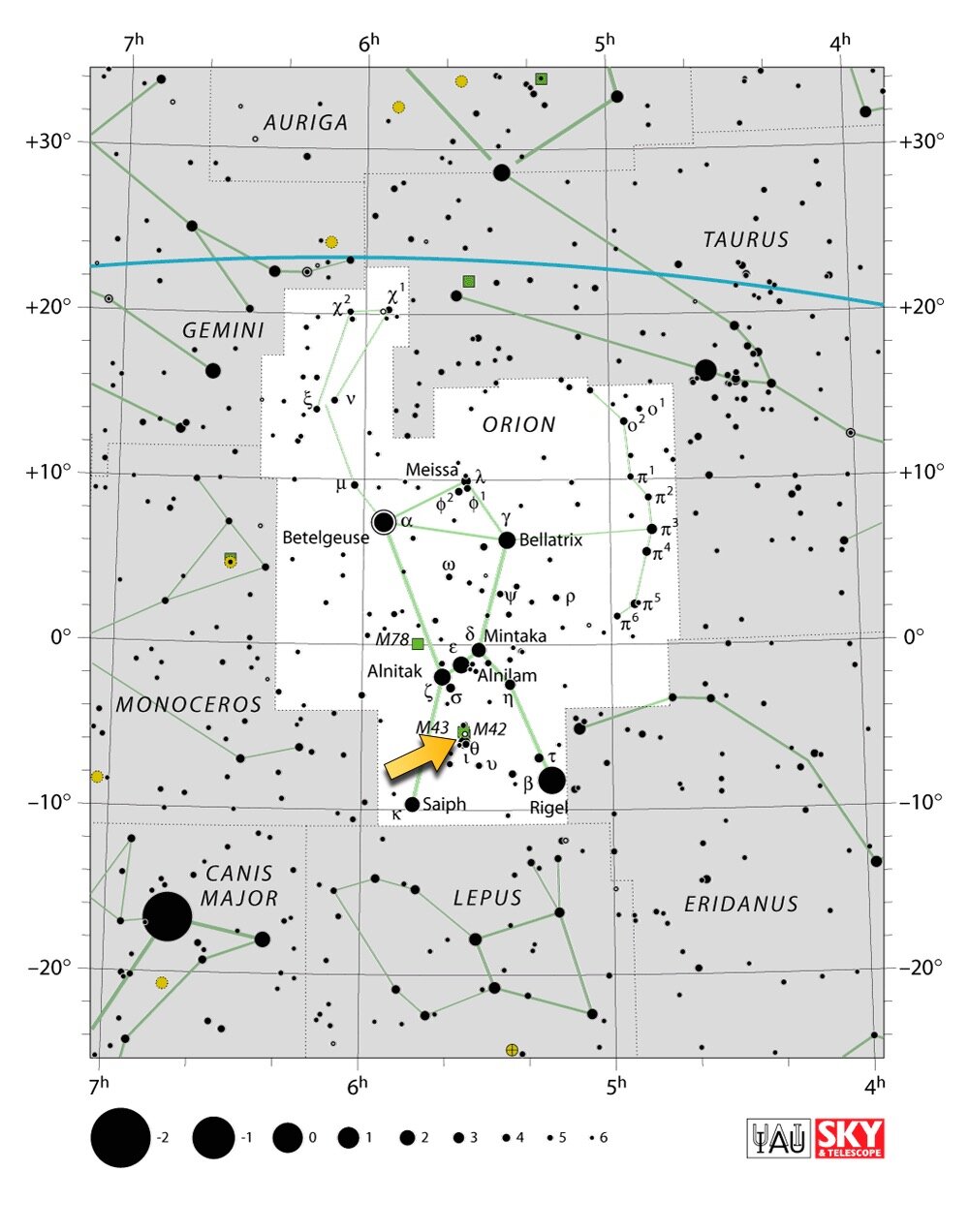Messier 42 - The Great Orion Nebula
Date: Dec 23, 2019
Cosgrove’s Cosmos Catalog ➤#0016
Awarded Flickr “Explore” Status!
Messier 42 - The Great Orion Nebula (click to enlarge)
Table of Contents Show (Click on lines to navigate)
About the Target
My original processing of M42. (Click to Zoom)
Messier 42 - The Great Orion Nebula. Also known as NGC 1976. Everybody that does astrophotography shoots this very famous object at some point or another. This is my very first shot at it. This bright nebula is located 1300 light-years away in the constellation Orion. It can be seen as part of the sword in Orion's belt and is visible to the naked eye. The Orion Nebula is a large cloud of gas and dust that is an area of new star formation and is a known stellar nursery. Located in the core is the famous tight star cluster known as the Trapezium. This is located in the brightest part of the nebula.
About the Project
M42 is a very high dynamic range scene, and it is straightforward to saturate the brightest parts. So my strategy with this project was to do one series of subs to pull in the nebula and then another series of subs that were short in exposure to capture the bright areas - and then blend them.
So I did 20 x 3-minute exposures for the main nebula and 20 x 2-seconds for the Trapezium and brighter portions.
Processing was done all in Photoshop, and the two images were blended using a mask.
I was pretty happy with the original image I produced with this effort. There was a lot of detail and structure evident and I got a pretty good response when I shared the image. However, my initial image seemed to have a lot of green tones to it. In general, there is not much green coloration in deep-sky objects unless they are some kinds of planetary nebulas. But at the time I did not know this. Below is my original image.
After I had started using Pixinsight, I went back to my M42 data and did a complete reprocess, and used the Photometric Color Calibration routine to set the color. The final result of that effort is the image that I used as the main one for this posting.
It was not until much later that I learned that there in fact is a subtle green color to M42 caused by a double ionization process that only happened with rarified gases. So maybe my original is right.
Which do you like better?
The Annotated Image
An annotated image of the Horsehead and FLame Nebulae was created by using Pixinsight’s ImageSolver and AnnotateImage Scripts.
The Location in the Sky
IAU/Sky & Telescope Constellation Map of Orion - with M42 region marked by the yellow arrow.
More Information
Wikipedia: Messier 42
Wikipedia: Trapezium
NASA: M42 and Hubble Images
Capture Details
Light frames
30 x 180 seconds, bin 1x1 @ -15C, unity gain
20 X 2 seconds, bin 1x1, @-15C, unity gain
Total of 1.5 hours
Cal Frames
• 25 bias frames at 1 seconds , bin 1x1 @ -15C, unity gain
• 25 Darks 180 seconds, bin 1x1 @ -15C
• 25 Darks 2 seconds, bin 1x1 @ -15C
• 25 Flats
Capture Hardware
Scope: William Optics 132mm f/7 FLT APO Refractor
Focus Motor: Pegasus Astro Focus Cube 2 - new
Guide Scope: Apterna 60mm Guidescope - new
Mount: Ioptron CEM 60
Tripod: Ioptron Tri-Pier
Camera: ZWO ASI294MC-Pro
Guide Camera: ZWO ASI290MM-Mini
Dew Strips: Dew-Not Heater strips for Main and Guide Scopes - new
Power Dist: Pegasus Astro Pocket Powerbox - new
USB Dist: Startech 8 slot USB 3.0 Hub - new
Polar Alignment Camera: Polemaster
Software
Capture Software: PHD2 Guider, Sequence Generator Pro controller
Image Processing: Deepsky Stacker, Pixinsight, Photoshop - assisted by Coffee, extensive processing indecision and second-guessing, editor regret and much swearing….


During August and September I was out shooting every clear night. I had learned a lot of things but I was also noticing several issues that were causing me problems as I did more imaging. I decided to do something to address those issues….